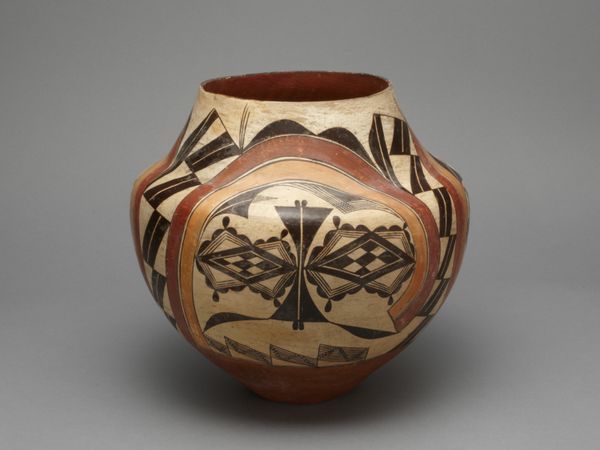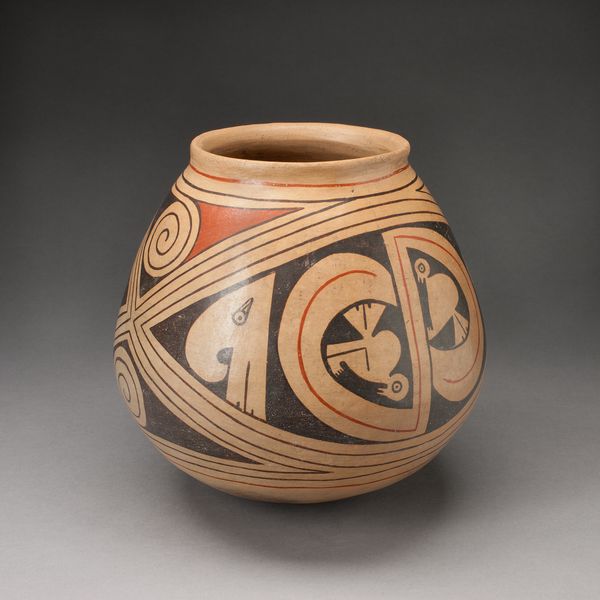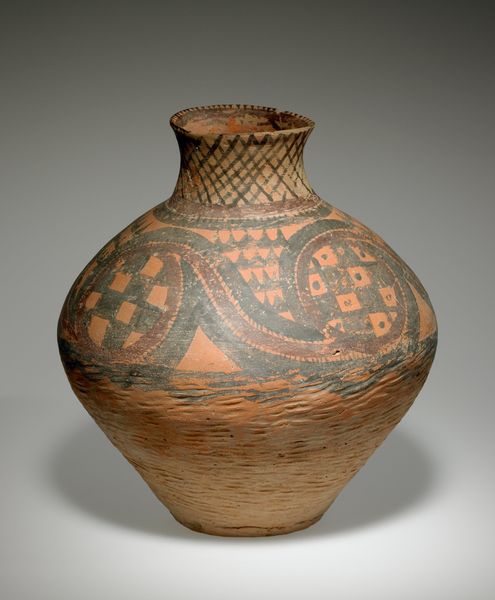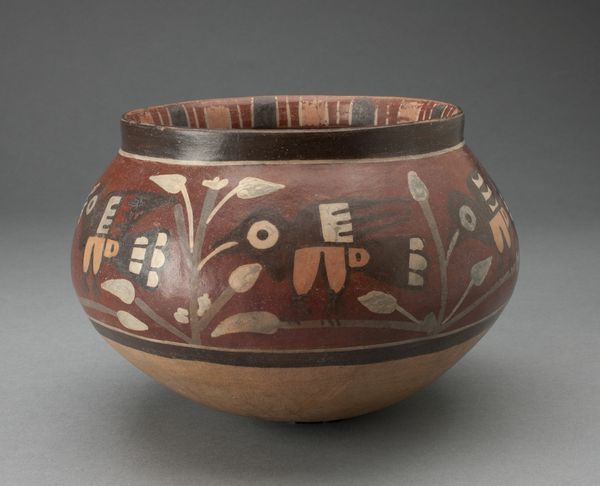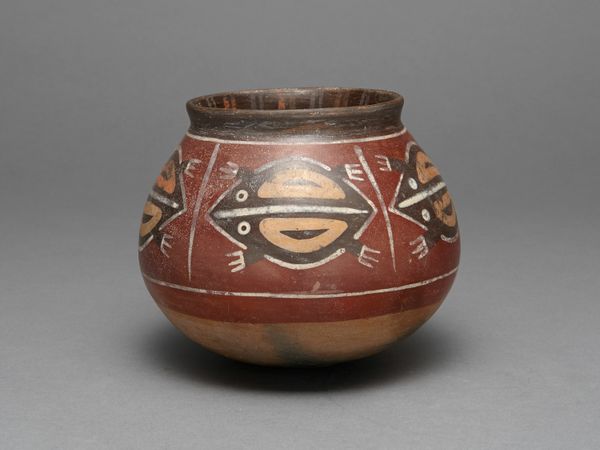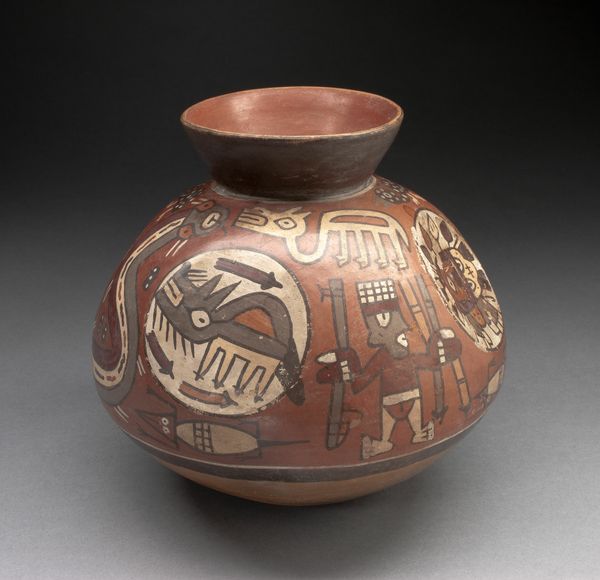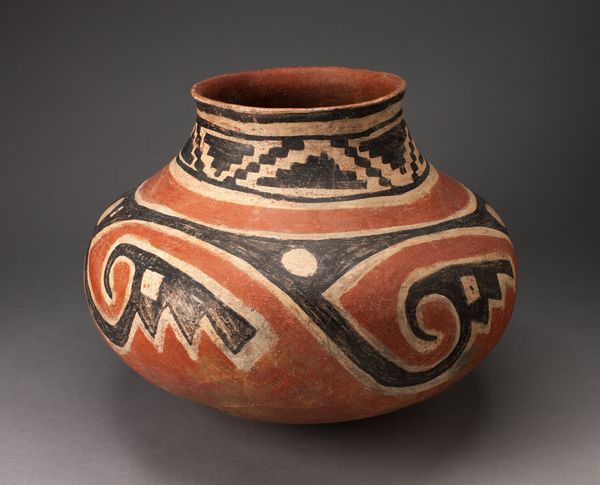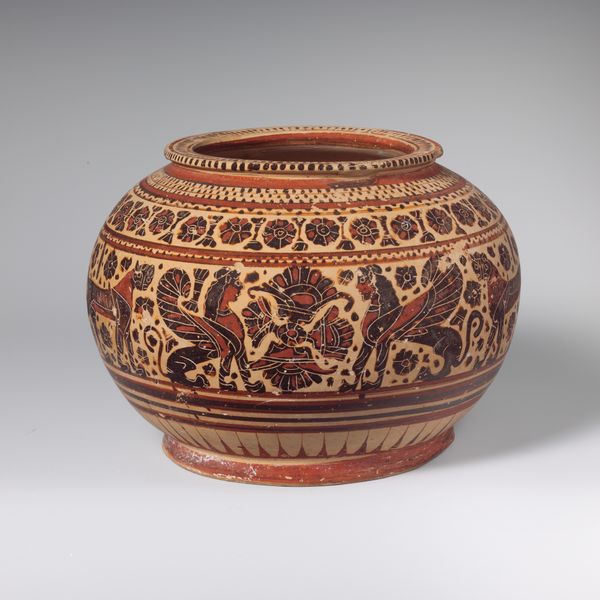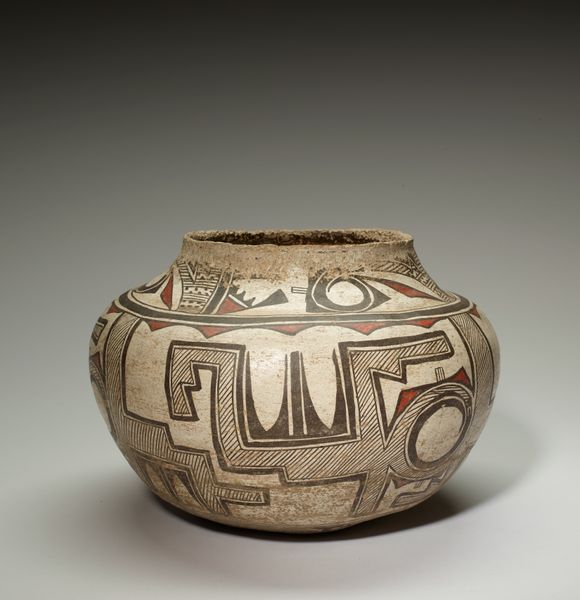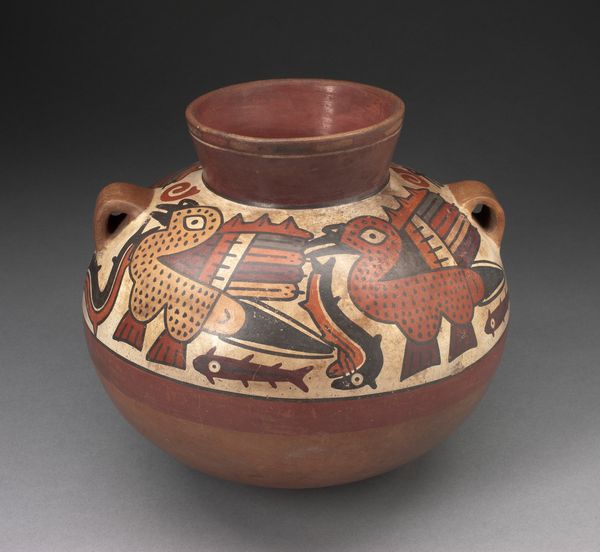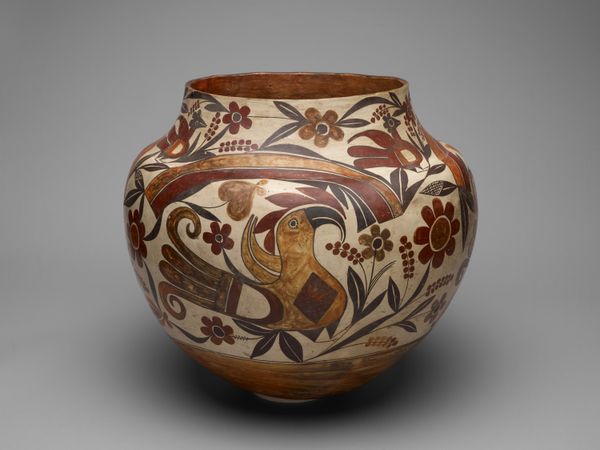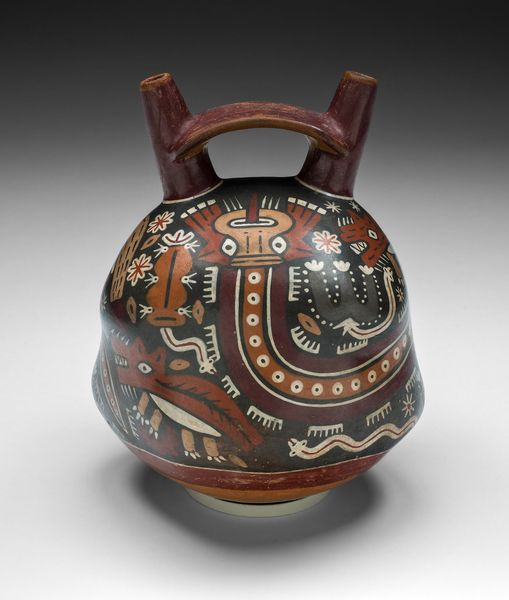
Jar with Two Plumed or Horned Serpents with Birds and P-shaped Motifs 1280 - 1450
0:00
0:00
ceramic
#
ceramic
#
figuration
#
form
#
geometric
#
indigenous-americas
Dimensions: 21.6 × 24.1 cm (8 1/2 × 9 1/2 in.)
Copyright: Public Domain
Editor: This is a Casas Grandes ceramic jar from between 1280 and 1450, housed here at the Art Institute of Chicago. The painted imagery of plumed serpents and birds has such a captivating energy. What is your interpretation of this work, and what historical insights can you offer about its creation and cultural significance? Curator: This jar offers a fascinating glimpse into the cosmology and social structure of the Casas Grandes culture. The plumed serpent wasn't merely decorative; it was a potent symbol deeply intertwined with religious beliefs, representing creation, fertility, and water – essential elements in their arid environment. The placement of these figures on a vessel like this speaks volumes about its function, perhaps for ritualistic purposes or elite display. Editor: Elite display? How do you know? Curator: Ceramic production, particularly the intricate painting we see here, required specialized skills. This suggests a degree of social stratification where some individuals or families held a monopoly over this craft. Moreover, the presence of these symbolic motifs would likely have been understood, and perhaps even controlled, by a select group within the society, indicating that access to these vessels was not universal. What do you think that indicates about power? Editor: It indicates how the ruling class managed to differentiate themselves. So, seeing this piece, with its geometric patterns and stylized animals, helps us reconstruct not only their beliefs, but also their social hierarchy? Curator: Precisely. Art serves as a powerful document, revealing the interwoven nature of belief, social organization, and power dynamics in past societies. Understanding this, how does this impact the role museums take on to represent their works to a broad audience? Editor: This has given me a whole new perspective on how to look at indigenous art! Thank you. Curator: My pleasure. The power of historical context shapes the contemporary understanding of art.
Comments
No comments
Be the first to comment and join the conversation on the ultimate creative platform.
